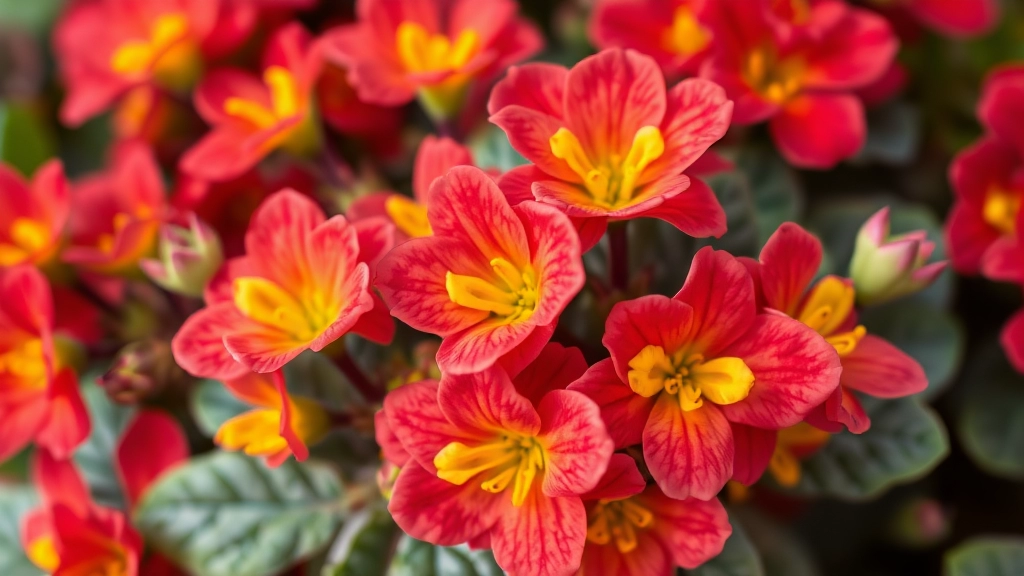Kalanchoe Flower Issues
Have you noticed your Kalanchoe flowers turning brown and wondered why? You’re not alone. Many plant enthusiasts face this issue, and understanding the causes is the first step to keeping your Kalanchoe healthy and vibrant. Factors like improper watering, pest infestations, and poor light exposure can all contribute to this problem.
Causes of Browning Flowers
Overwatering or underwatering your Kalanchoe can lead to browning flowers. Similarly, inadequate soil drainage and incorrect light exposure can stress the plant, causing its flowers to turn brown. Identifying and addressing these issues early can help revive your Kalanchoe and keep it flourishing.
Causes of Browning in Kalanchoe Flowers
Have you ever noticed your beautiful Kalanchoe flowers turning brown? It’s a common concern for many plant enthusiasts. Understanding the causes of browning is crucial to maintaining the health and vibrancy of your Kalanchoe.
Overwatering
One of the primary causes of browning in Kalanchoe flowers is overwatering.
- Signs: Yellowing leaves, mushy stems, and browning petals.
- Why it happens: Excess water leads to root rot, depriving the plant of essential nutrients.
Underwatering
Conversely, underwatering can also lead to browning.
- Signs: Dry, crispy leaves and drooping flowers.
- Why it happens: Insufficient water limits the plant’s ability to photosynthesize effectively.
Nutrient Deficiency
A lack of essential nutrients can cause Kalanchoe flowers to brown.
- Signs: Stunted growth and discolouration.
- Why it happens: Inadequate fertilization can lead to deficiencies in key nutrients like nitrogen and potassium.
Environmental Stress
Environmental factors play a significant role in the health of your Kalanchoe.
- Signs: Browning can occur suddenly due to changes in light or temperature.
- Why it happens: Sudden drafts or extreme temperatures can shock the plant.
For more detailed guidance on keeping your Kalanchoe healthy, check out our guide on drooping Kalanchoe flowers and our complete care guide for Kalanchoe succulents.
Effects of Overwatering and Underwatering
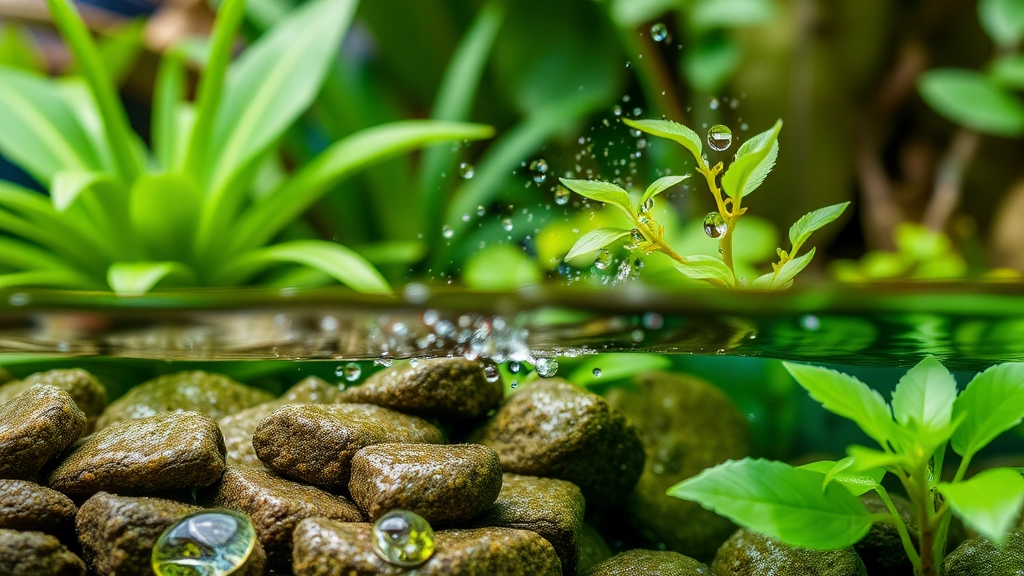
Have you ever noticed your Kalanchoe flowers drooping or turning brown? It’s a common worry for plant lovers, and often, the culprit is either overwatering or underwatering.
Overwatering
Overwatering can be a sneaky issue. You might think you’re being kind by giving your plant extra water, but too much can lead to root rot. Here’s what happens:
- Yellowing Leaves: The first sign is usually yellow leaves, which can be a cry for help.
- Mushy Stems: If the stems feel soft or mushy, that’s a major red flag.
- Browning Flowers: Eventually, the flowers start to brown and drop off.
Underwatering
On the flip side, underwatering can be just as damaging. If you forget to water your Kalanchoe, it will show signs of distress too:
- Crispy Leaves: Leaves may become dry and crispy, losing their vibrant green.
- Wilting: The plant starts to droop, looking sad and lifeless.
- Browning Edges: You might notice the edges of the leaves turning brown, a clear sign it’s thirsty.
Finding the Right Balance
So, how do you find that sweet spot?
- Check the Soil: Stick your finger about an inch into the soil. If it’s dry, it’s time to water. If it’s wet, hold off.
- Watering Schedule: Aim for a routine, watering every 1-2 weeks depending on the season.
- Use Well-Draining Soil: This helps prevent water from sitting around the roots.
Impact of Temperature and Humidity on Kalanchoe Health
When caring for Kalanchoe, many of us overlook the significant role that temperature and humidity play in their overall health. Have you ever wondered why your Kalanchoe flowers are browning despite your best efforts?
Temperature Considerations
Kalanchoe thrives in warm environments, ideally between 20°C and 25°C (68°F to 77°F). Here’s what you need to keep in mind:
- Low Temperatures: Anything below 10°C (50°F) can stress your plant, leading to browning leaves and flowers.
- High Temperatures: Excessive heat above 30°C (86°F) can also cause issues, drying out your plant quickly.
Humidity Levels
Humidity is another critical factor. Kalanchoe prefers moderate humidity levels, typically around 40-60%. Here’s how it affects your plant:
- Low Humidity: If the air is too dry, your Kalanchoe may develop brown tips on leaves or flowers.
- High Humidity: Conversely, excessive moisture can lead to fungal diseases, which we will cover later.
Tips for Managing Temperature and Humidity
- Location: Place your Kalanchoe in a room with consistent temperatures, away from drafts and heat sources.
- Humidity Control: Use a humidifier or pebble trays with water to maintain optimal humidity levels.
If you notice your Kalanchoe flowers losing color, it could be due to improper temperature and humidity levels. For more on this, check out our guide on why Kalanchoe flowers lose color.
Additionally, different Kalanchoe varieties may have specific needs. For instance, the Kalanchoe Paddle Plant has particular care requirements to thrive.
Soil Quality and Drainage Considerations
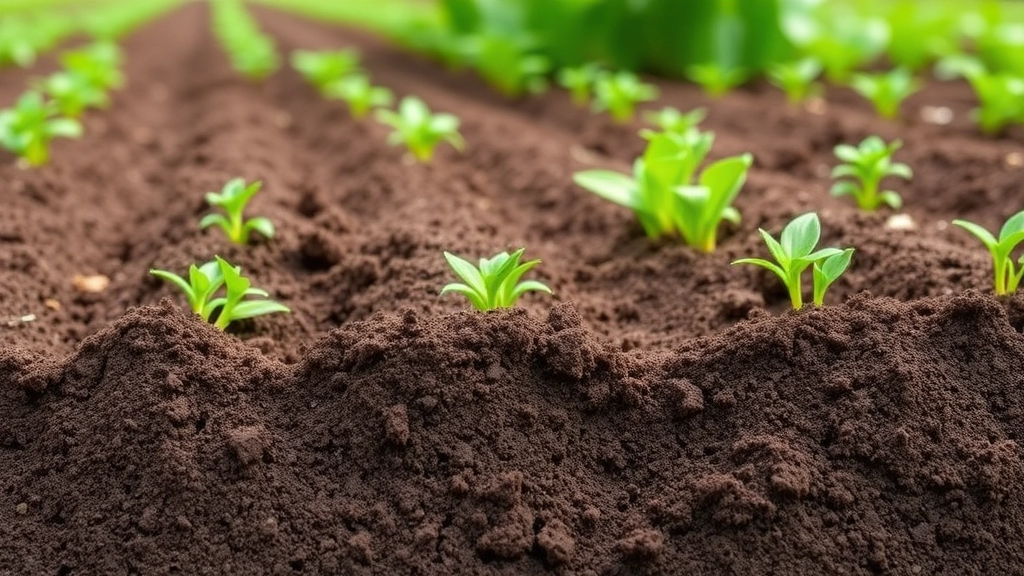
Have you ever wondered why your Kalanchoe flowers are struggling despite your best care efforts? One significant factor could be the soil quality and drainage.
Importance of Soil Quality
Kalanchoe thrives in well-draining soil, which is crucial for preventing root rot and ensuring healthy growth. Poor soil quality can lead to nutrient deficiencies and ultimately contribute to browning flowers.
Key Soil Components
- Cactus Mix: A cactus or succulent mix is ideal as it provides excellent drainage.
- Perlite or Pumice: Adding these materials can improve aeration and drainage.
- Organic Matter: Incorporating compost can enhance nutrient levels without compromising drainage.
Drainage Considerations
Proper drainage is essential for Kalanchoe health. Here are some tips to ensure your plant thrives:
- Pot Choice: Use pots with drainage holes to allow excess water to escape.
- Layering: Place a layer of gravel or small stones at the bottom of the pot to facilitate drainage.
- Avoiding Soggy Soil: Always check that the soil is dry before watering.
Signs of Poor Soil and Drainage
- Yellowing leaves
- Wilting despite adequate watering
- Root rot, which can be identified by a foul smell or mushy roots
By focusing on soil quality and drainage, you can create an environment where your Kalanchoe can flourish.
Common Pests That Lead to Browning
Are your Kalanchoe flowers losing their vibrant colour and turning brown? One common culprit could be pests.
Pests can wreak havoc on your plants, leading to browning and wilting. Here are some of the most common pests that affect Kalanchoe:
- Aphids: Tiny, soft-bodied insects that suck the sap from the leaves, causing them to wilt and turn brown.
- Spider Mites: These microscopic pests create fine webbing on the plant and feed on the leaves, resulting in a speckled appearance and eventual browning.
- Mealybugs: White, cottony insects that cluster on stems and leaves, they can cause yellowing and browning as they drain the plant’s vitality.
- Scale Insects: Hard, shell-like pests that attach themselves to the plant; they can lead to leaf drop and browning as they feed.
To manage these pests effectively, consider the following strategies:
- Regular Inspection: Check your Kalanchoe regularly for any signs of pests. Early detection is key.
- Natural Predators: Introduce beneficial insects like ladybugs that feed on aphids and other pests.
- Neem Oil: This natural pesticide can be sprayed on affected areas to deter pests without harming the plant.
- Isolation: If you notice an infestation, isolate the affected plant to prevent the spread to others.
- Cleaning: Wipe leaves with a damp cloth to remove pests and dust, promoting better health. For more detailed advice, check out our Kalanchoe Tomentosa white spots causes and treatments.
Additionally, if you’re dealing with persistent issues, you might want to explore our guide on fixing drooping Kalanchoe leaves for more tips on maintaining plant health.
Identifying and Treating Fungal Diseases in Kalanchoe
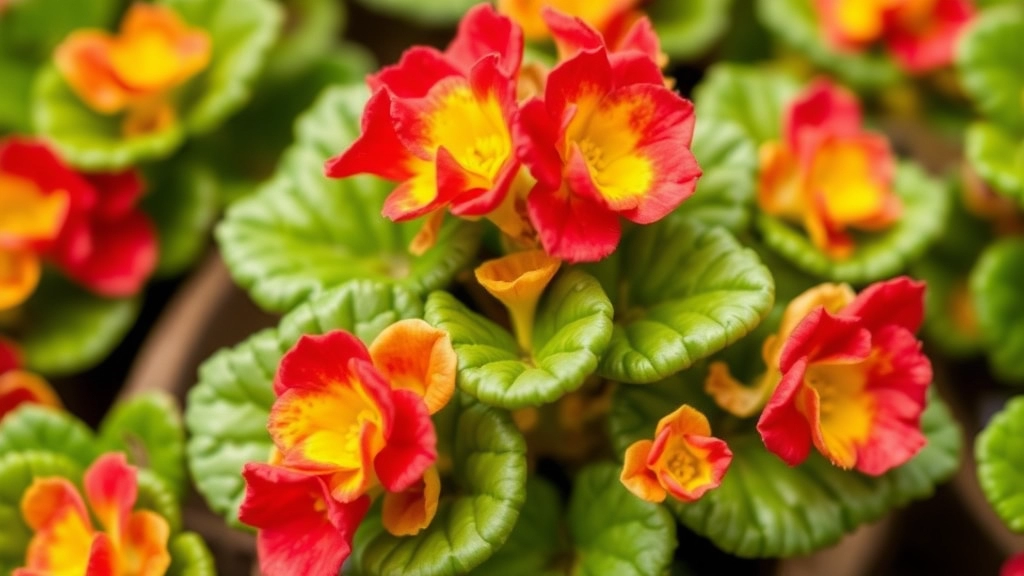
Have you noticed some unsightly spots on your Kalanchoe flowers? Or maybe the leaves are wilting and turning brown? These could be signs of fungal diseases, and trust me, they can be a real headache for plant lovers.
Common Fungal Diseases
- Powdery Mildew:
- Looks like a white powder on leaves.
- Thrives in high humidity and poor air circulation.
- Root Rot:
- Caused by overwatering.
- Symptoms include yellowing leaves and mushy roots.
- Leaf Spot:
- Dark brown or black spots on leaves.
- Can spread quickly if not treated.
Identifying the Issue
To tackle these pesky fungi, you need to know what you’re dealing with. Here’s how to identify them:
- Visual Inspection: Check for any unusual spots, wilting, or discoloration.
- Smell Test: A musty smell can indicate rot.
- Texture Check: Feel the leaves. Are they soft or mushy? That’s a red flag.
Treatment Options
Once you’ve identified the problem, it’s time to take action. Here are some straightforward treatments:
- Remove Affected Parts: Cut away any infected leaves or stems.
- Improve Airflow: Space out your plants to allow better circulation.
- Adjust Watering: Ensure the soil dries out between waterings to prevent root rot.
- Use Fungicides: If the problem persists, consider a suitable fungicide. Always follow the instructions on the label.
Prevention Tips
Prevention is always better than cure. Here’s how to keep your Kalanchoe healthy:
- Water Wisely: Only water when the top inch of soil is dry.
- Choose the Right Soil: Use well-draining soil to avoid excess moisture.
- Monitor Humidity: Keep humidity levels in check, especially in closed spaces.
Proper Watering Techniques to Prevent Flower Browning
Have you ever noticed your Kalanchoe flowers browning and wondered if your watering habits might be to blame?
Proper watering is crucial for maintaining the vibrant blooms of your Kalanchoe. Both overwatering and underwatering can lead to unsightly browning, affecting not just the flowers but the overall health of the plant.
Here are some key techniques to ensure you’re watering your Kalanchoe correctly:
– **Check the Soil Moisture:** Before watering, always check if the top inch of soil is dry. Use your finger to gauge moisture levels. Kalanchoe prefers to dry out slightly between waterings.
– **Water Thoroughly:** When you do water, ensure you soak the soil thoroughly. This encourages deep root growth. Allow excess water to drain out of the pot to prevent root rot.
– **Use Room Temperature Water:** Cold water can shock the plant. Using water at room temperature is gentler and helps maintain consistent soil temperature.
– **Adjust for Seasons:** In the growing season (spring and summer), Kalanchoe may need more frequent watering. Conversely, in the dormant winter months, reduce watering to avoid over-saturation.
– **Consider the Pot:** Ensure your pot has drainage holes. This allows excess water to escape and prevents waterlogging, which can lead to browning.
By mastering these watering techniques, you can significantly reduce the risk of flower browning in your Kalanchoe. For more detailed plant care, you might find our [Complete Guide to Kalanchoe Plant Care](https://planthq.org/complete-guide-to-kalanchoe-plant-care/) helpful. If you’re dealing with specific issues like leaf curling, our article on [Causes and Solutions for Kalanchoe Leaves Curling](https://planthq.org/causes-and-solutions-for-kalanchoe-leaves-curling/) offers targeted advice.
How Light Exposure Affects Kalanchoe Growth
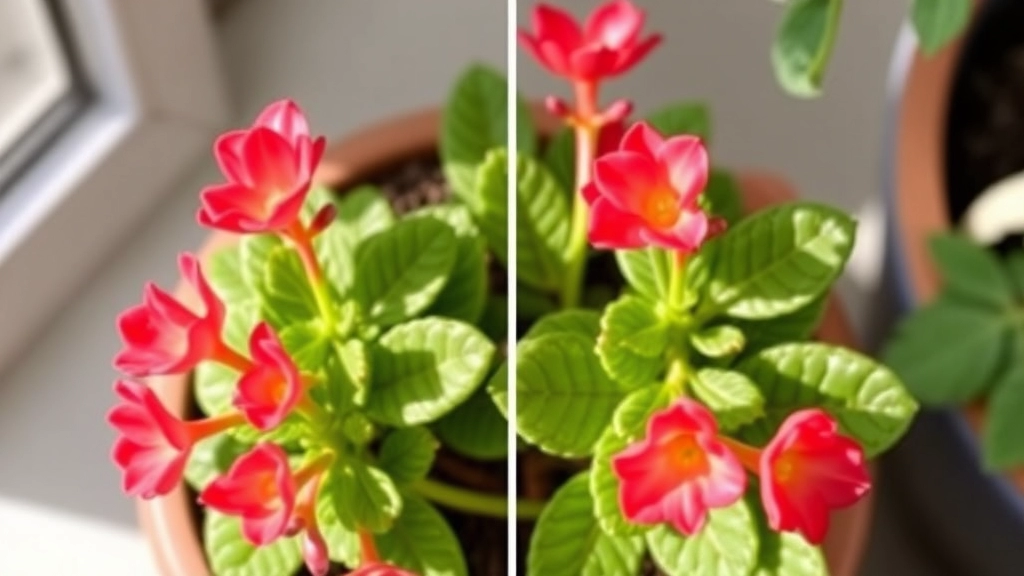
Have you ever noticed your Kalanchoe flowers struggling to thrive? One of the biggest culprits might just be light exposure.
Kalanchoe plants love bright, indirect sunlight. Too little light can lead to leggy growth and fewer blooms, while too much direct sunlight can scorch those beautiful petals.
Here’s a quick breakdown of how light impacts your Kalanchoe:
- Optimal Light: Aim for 6 hours of bright, indirect sunlight daily.
- Too Little Light: If your Kalanchoe is in a dim corner, it may become weak and produce fewer flowers.
- Too Much Sun: Direct sunlight can cause leaf burn, leading to browning edges and wilting flowers.
When I first started growing Kalanchoe, I made the mistake of placing mine in a south-facing window. The intense afternoon sun turned my vibrant flowers into a sad, brown mess.
To avoid this, consider these tips:
- Rotate Your Plant: Every couple of weeks, give your Kalanchoe a gentle turn to ensure even light exposure.
- Use Sheer Curtains: If you’re in a particularly sunny spot, a sheer curtain can help diffuse the light.
- Monitor Growth: Keep an eye on how your plant reacts. If you notice it stretching towards the light, it’s time to reposition it.
By finding that sweet spot for light exposure, you’ll set your Kalanchoe up for success.
Best Practices for Fertilizing Kalanchoe
When it comes to nurturing Kalanchoe plants, proper fertilization plays a crucial role in preventing flower browning and promoting overall health. Many plant enthusiasts often wonder how to provide the right nutrients without overwhelming their beloved succulents.
Understanding Nutritional Needs
Kalanchoe thrives on a balanced diet. Here are some essential tips for fertilizing effectively:
- Type of Fertilizer: Use a balanced, water-soluble fertilizer, ideally one with a ratio of 10-10-10 or 20-20-20. This ensures your plant receives equal parts nitrogen, phosphorus, and potassium.
- Dilution Is Key: Always dilute the fertilizer to half the recommended strength. Kalanchoe is sensitive to strong nutrients, and less is often more.
- Frequency: Fertilize every 4 to 6 weeks during the growing season (spring and summer). During the dormant months (fall and winter), reduce feeding to every 8 weeks or stop altogether.
Timing Matters
- Before Blooming: Apply fertilizer just before the blooming period to encourage vibrant flowers.
- Post-Bloom Care: After flowering, continue fertilizing to support new growth, but adjust your schedule as the plant enters dormancy.
Signs of Over-Fertilization
Be mindful of the signs that your Kalanchoe may be getting too much fertilizer:
- Yellowing leaves
- Leaf drop
- Browning tips on leaves
If you notice these symptoms, flush the soil with water to remove excess nutrients.
Additional Tips
- Organic Options: Consider using organic fertilizers like compost or worm castings for a gentler approach.
- Soil Testing: Occasionally test your soil to check nutrient levels, ensuring your Kalanchoe gets what it needs.
- Watering After Fertilizing: Always water your Kalanchoe after applying fertilizer to help distribute nutrients evenly.
For more detailed information on caring for specific Kalanchoe varieties, check out our complete care guide for Kalanchoe Flapjack plant and our guide on why your Kalanchoe is not flowering.
Tips for Reviving Kalanchoe Flowers After Browning
So, your Kalanchoe flowers are looking a bit worse for wear?
Don’t worry; I’ve been there too, and I’m here to share some tips that can help breathe new life into your plant.
Assess the Damage
First things first, take a close look at your Kalanchoe.
- Inspect the Leaves: Are they wilting or crispy?
- Check the Flowers: Are they brown and droopy?
Understanding the extent of the browning will guide your next steps.
Adjust Watering Habits
Watering is often the culprit behind browning flowers.
- Allow Soil to Dry: If the soil is soggy, let it dry out completely before watering again.
- Use Room Temperature Water: Cold water can shock the plant, so aim for something more neutral.
Prune the Affected Areas
Don’t be afraid to get your hands dirty!
- Trim Dead Flowers: Snip off any brown or wilted flowers to encourage new growth. For more detailed guidance, you can refer to this postbloom care guide.
- Remove Damaged Leaves: This helps the plant focus its energy on healthier parts.
Improve Lighting Conditions
Kalanchoes love light, but too much direct sunlight can scorch them.
- Find the Right Spot: Aim for bright, indirect sunlight. A south-facing window often works wonders. For more lighting tips, check out this flowering Kalanchoe care guide.
- Rotate Your Plant: Give all sides equal exposure to light.
Check for Pests
Sometimes, tiny invaders can be the reason for browning.
- Inspect Regularly: Look for signs of pests like aphids or mealybugs.
- Use Insecticidal Soap: If you spot any, treat your plant promptly.
Fertilize Wisely
A little boost can do wonders.
- Use a Balanced Fertilizer: Opt for something like a 10-10-10 mix during the growing season.
- Don’t Overdo It: Too much fertilizer can burn the roots, so stick to the recommended amount.
Create a Humid Environment
Kalanchoes thrive in humidity, so let’s help them out.
- Mist the Leaves: A light misting can increase humidity without overwatering.
- Use a Humidifier: If your home is dry, consider using one to create a more inviting atmosphere.
Monitor Temperature
Keep an eye on the temperature.
- Aim for 20-25°C: This is the sweet spot for Kalanchoes.
- Avoid Drafts: Keep them away from cold windows or heating vents.
FAQs on Kalanchoe Flowers Turning Brown
Why are my Kalanchoe flowers turning brown?
Kalanchoe flowers can turn brown due to a variety of reasons, including overwatering, underwatering, poor soil quality, inadequate drainage, fungal diseases, and improper light exposure.
How does overwatering affect Kalanchoe flowers?
Overwatering can lead to root rot, which manifests as yellowing leaves, mushy stems, and eventually browning flowers. It’s important to ensure the soil is well-draining and not too wet.
What are the signs of underwatering in Kalanchoe plants?
Signs of underwatering include crispy leaves, wilting, and browning edges on the leaves. The plant may look sad and lifeless due to lack of water.
How can I find the right balance for watering my Kalanchoe?
To find the right balance, check the soil moisture by sticking your finger about an inch into the soil. Water only when the soil is dry. Aim for a watering schedule of every 1-2 weeks, depending on the season.
What type of soil is best for Kalanchoe plants?
Kalanchoe thrives in well-draining soil. A cactus or succulent mix is ideal, and adding perlite or pumice can improve aeration and drainage. Incorporating some organic matter can also enhance nutrient levels.
How can I improve drainage for my Kalanchoe plant?
Use pots with drainage holes and place a layer of gravel or small stones at the bottom of the pot to facilitate drainage. Always ensure the soil is dry before watering again.
What are common fungal diseases that affect Kalanchoe?
Common fungal diseases include powdery mildew, root rot, and leaf spot. These diseases can cause symptoms like white powder on leaves, yellowing leaves, mushy roots, and dark brown or black spots on leaves.
How can I treat fungal diseases in my Kalanchoe?
Treat fungal diseases by removing affected parts, improving airflow, adjusting watering practices, and using suitable fungicides if necessary. Always follow the instructions on the fungicide label.
What is the best light exposure for Kalanchoe plants?
Kalanchoe plants prefer bright, indirect sunlight for about 6 hours daily. Too little light can lead to weak growth and fewer flowers, while too much direct sunlight can scorch the leaves and flowers.
How can I prevent my Kalanchoe flowers from turning brown due to light exposure?
Rotate your plant every couple of weeks to ensure even light exposure, use sheer curtains to diffuse intense sunlight, and monitor the plant’s growth to reposition it if necessary.
References
-
Gardening Know How – Overwatering vs. Underwatering in Kalanchoe
-
The Spruce – Kalanchoe Care Guide
-
The Old Farmer’s Almanac – Kalanchoe Plant Care
